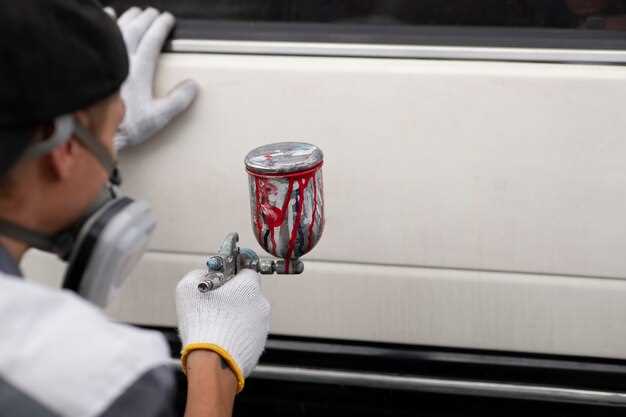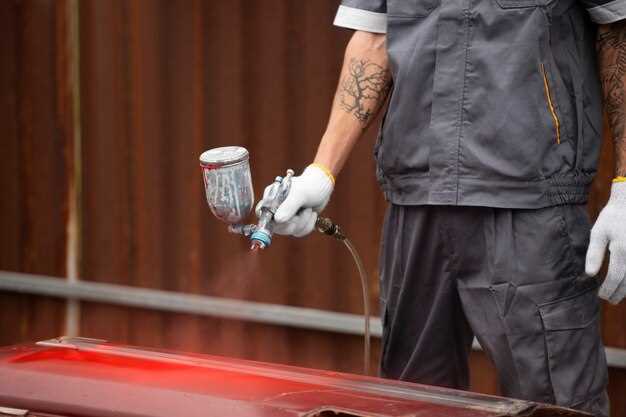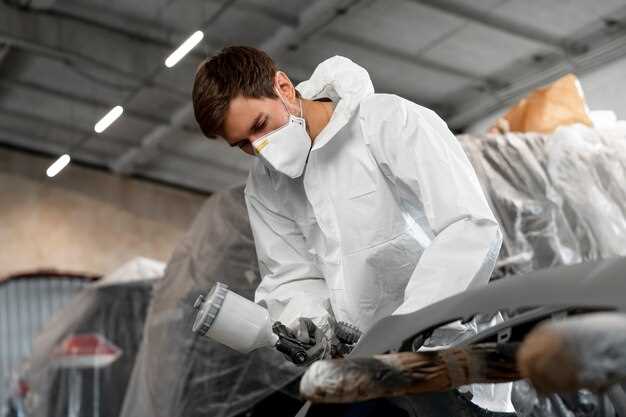
The appearance of your car’s paint plays a crucial role in its overall aesthetic and value. A well-maintained exterior not only enhances its beauty but also protects the underlying materials from environmental damage. Various factors, such as UV rays, dirt, and bird droppings, can negatively affect the condition of your car’s paint, leading to costly repairs and a diminished resale value.
To keep your vehicle looking pristine, it’s essential to adopt a few simple yet effective maintenance practices. Regular washing is the foundation of paint care, as it removes harmful contaminants that can cause scratches and fading. Additionally, applying a protective wax or sealant can provide an extra layer of defense against the elements, prolonging the life of your paint job.
Moreover, understanding when and how to perform touch-ups is vital for addressing minor imperfections before they escalate into more significant issues. This article will explore actionable tips and techniques that will help you maintain your car’s paint in perfect shape, ensuring it remains the envy of every driver on the road.
How to Wash Your Car Without Damaging the Paint

Washing your car is essential for maintaining its appearance and protecting the paint. However, improper washing techniques can lead to scratches, swirl marks, and dullness. Follow these steps to wash your car safely and effectively:
- Choose the Right Time and Place
- Avoid washing your car in direct sunlight to prevent water spots and soap from drying too quickly.
- Choose a cool and shaded area to keep the surface temperature low.
- Gather the Right Supplies
- High-quality car wash soap specifically designed for automotive paint.
- Soft microfiber wash mitts or sponges to prevent scratches.
- Two buckets: one for soapy water and another for rinsing.
- A hose with a spray nozzle for controlled water flow.
- Microfiber towels for drying.
- Pre-Wash Your Car
- Rinse the car thoroughly to remove loose dirt and debris.
- This reduces the risk of scratches during the washing process.
- Use the Two-Bucket Method
- Fill one bucket with soapy water and the other with clean water for rinsing your mitt.
- Dip the wash mitt in the soapy water, wash a panel of the car, then rinse the mitt in the clean water before reusing it.
- Wash in Sections
- Wash the car in sections, starting from the top and working your way down.
- This helps avoid having dirt run down onto cleaned areas.
- Rinse Thoroughly
- After washing each section, rinse the area with clean water to remove soap and dirt properly.
- Make sure to rinse off any soap before it dries to avoid streaks.
- Dry the Car Properly
- Use clean microfiber towels to dry the car.
- Pat the surface dry instead of rubbing, which can cause scratches.
- Make sure to dry in the same order as you washed to avoid missing spots.
- Finish with a Clay Bar (Optional)
- If the paint feels rough after washing, consider using a clay bar to remove embedded contaminants.
- This step enhances the finish and prepares it for wax or sealant application.
By following these steps, you can effectively wash your car while preserving its paint. Regular maintenance will keep your vehicle looking great and extend the life of its exterior.
Choosing the Right Wax for Durable Protection

Selecting the appropriate wax for your car’s paint is essential for maintaining its appearance and offering long-lasting protection. Different types of waxes are available, each with unique properties and benefits. The two primary categories are natural waxes and synthetic waxes.
Natural waxes, such as carnauba, are derived from plants and provide a deep, warm shine. They are known for their excellent water repellency and UV protection, which helps to preserve the paint’s integrity. However, natural waxes typically require more frequent application due to their shorter durability, generally lasting from a few weeks to a couple of months.
Synthetic waxes, on the other hand, are formulated from polymers and tend to offer greater durability. They can last several months, providing robust protection against environmental contaminants, such as bird droppings, tree sap, and road grime. Synthetic waxes are also easier to apply and remove, making them a popular choice for those looking for convenience.
When choosing a wax, consider factors such as your climate, driving habits, and the condition of your paint. For example, if you live in an area with harsh weather conditions, a synthetic wax may be preferable due to its enhanced protection. If you are eager to achieve a classic shine and are willing to maintain it regularly, a carnauba wax may suit your needs.
Look for products that include additional benefits, such as hydrophobic properties or advanced sealing technology, which can improve water beading and shield against dirt accumulation. Additionally, always read product reviews and descriptions to ensure you select wax that is compatible with your car’s paint type and finish.
Ultimately, the right wax will not only enhance the aesthetic appeal of your vehicle but will also extend its lifespan by providing essential protection against the elements. Regular application, combined with proper washing techniques, will help keep your car’s paint in pristine condition.
Identifying and Repairing Paint Scratches Promptly
Scratches on your car’s paint can compromise its appearance and expose the metal underneath to potential rust and corrosion. Identifying these scratches early is crucial in preventing more extensive damage. Start by inspecting your vehicle regularly under good lighting conditions. Look for any disruption in the paint’s surface, which may appear as a shiny line or a dull mark. Pay particular attention to areas prone to scratches, such as around door handles, bumpers, and wheel wells.
When you identify a scratch, determine its depth. Light scratches, which only penetrate the clear coat, can often be polished out without professional help. Deeper scratches that go through the color coat to the primer require more attention. Evaluate if the scratch can be felt with your fingernail. If so, it is likely a deeper scratch that needs careful repair to prevent further damage.
For minor scratches, start by cleaning the affected area with automotive soap and water to remove dirt and debris. Once the area is clean and dry, apply a small amount of polish designed for scratches using a microfiber cloth. Rub it in a circular motion until the scratch diminishes, then buff the area to restore shine.
For deeper scratches, consider using a touch-up paint kit specific to your car’s color. Begin by ensuring the area is clean and dry. Apply the touch-up paint carefully using a fine brush or a toothpick, filling in the scratch. Once the paint has dried, you may need to apply clear coat for additional protection. Allow it to cure fully before polishing the area to blend with the surrounding paint.
In cases where scratches are extensive or you feel uncomfortable undertaking repairs, seeking professional help may be the best option. A professional detailer or auto body shop can assess the damage and provide a solution, ensuring your vehicle’s paint remains in optimal condition.
Timely identification and repair of scratches not only preserve your car’s aesthetic appeal but also enhance its resale value, making it a vital aspect of car maintenance.





